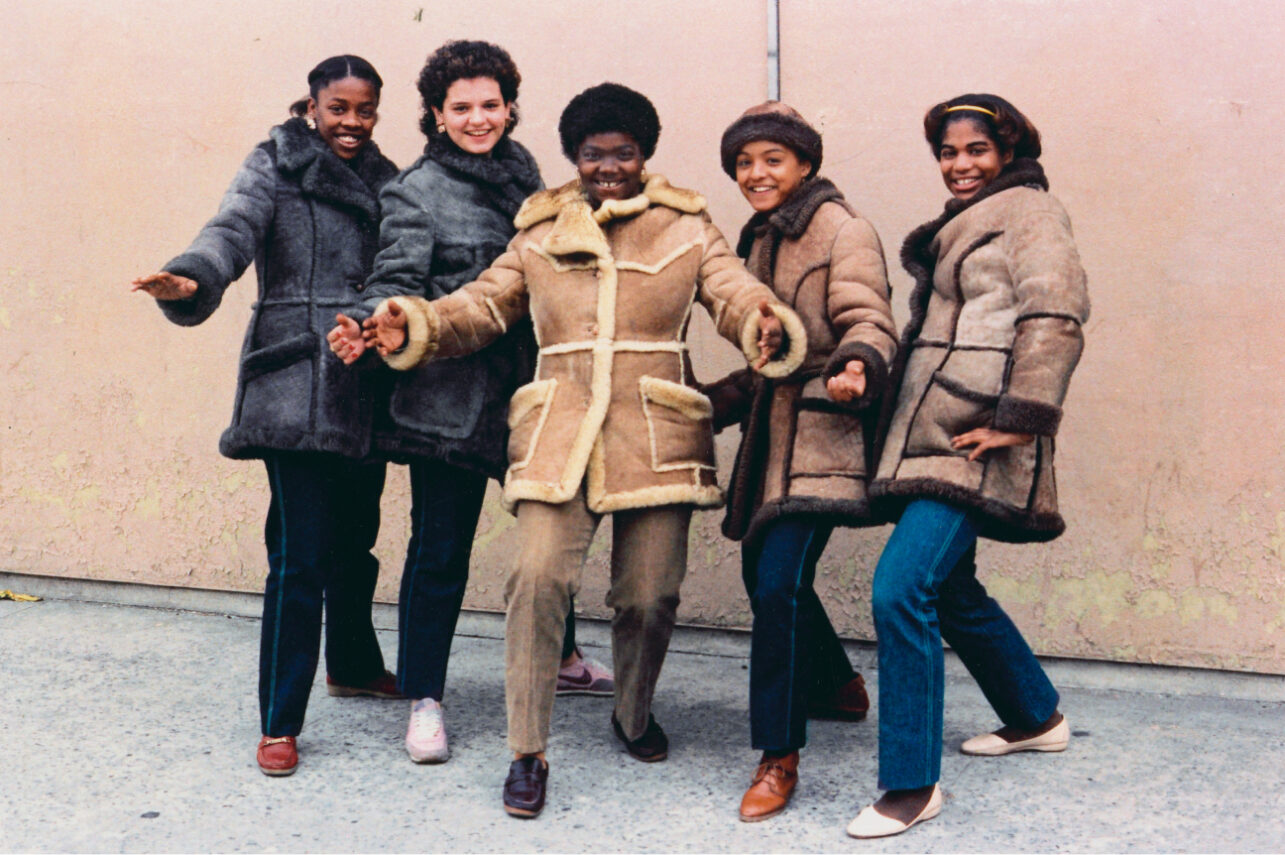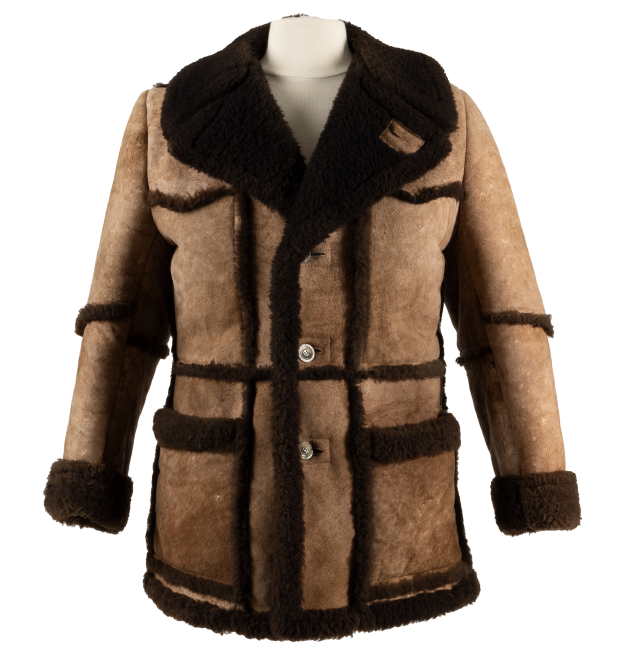ARTIFACT
HIP-HOP FASHION: A SHEARLING COAT FROM A RECENT MFIT SHOW INSPIRES INTENSE MEMORIES

For curators, exhibitions are passion projects, requiring years of exacting research. The commitment ran especially deep for Elena Romero, assistant professor of Advertising and Marketing Communications, who co-curated The Museum at FIT’s spring 2023 show, Fresh, Fly, and Fabulous: Fifty Years of Hip Hop Style. Celebrating the synergy between irresistible music and knockout fashions, the show also signified something personal for Romero and the audience. “I keep equating this exhibition with a family reunion,” she said. “What brings people together is a love of fashion and music—and the memories.”
Young, working-class Black and brown New Yorkers invented hip hop and its related clothing styles, which were first worn to parties and clubs. Most of the exhibition was sourced from personal collections, though high-end pieces—like a Moschino gown worn to the 2022 Met Gala by Megan Thee Stallion—complemented the humbler looks. Established brands with reputations in the culture (Ralph Lauren, Tommy Hilfiger) were included. So was master logo remixer Dapper Dan, whom co-curator Elizabeth Way called one of the most important designers of the 20th century for creating a dialogue between streetwear and luxury.

The everyday styles worn by ordinary people, however, drew the most attention. A Kangol hat, Air Jordan sneakers, chunky gold earrings, shearling jackets: These and other seemingly unremarkable items took on significance because they were worn to gatherings where hip hop was starting to be played. Romero contributed a pair of her daughter’s shoes—Reebok Freestyles known as 5411s because they cost $54.11 when first sold in New York in 1982. Images by noted street photographer Jamel Shabazz complemented crowdsourced photos of people wearing looks popularized by MCs and DJs, or just spotted around the neighborhood. “Museum shows are usually about things so far removed,” Romero said. “Anyone who comes here sees some part of themselves.”
One shearling jacket featured in a Shabazz photo sparked an emotional reminiscence. “It was the one thing I couldn’t have as a kid,” Romero said. “I wanted a navy blue one. Back then they cost about $200. I wanted one when I was 12, in 1985. It wasn’t about a brand; it was just a shearling you’d buy on Delancey Street.” Reflecting on the contemporary reliance upon luxury labels in the culture, she said, “In some ways, it’s disappointing. We didn’t have that. We made the style.”
